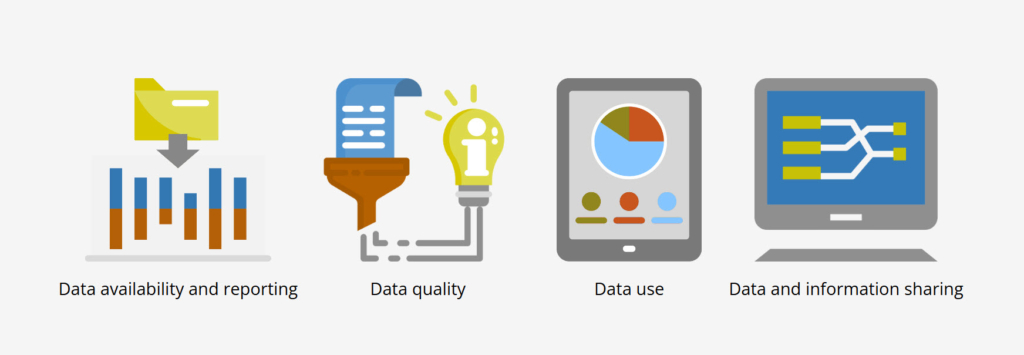Press enquiries:
+41 61 280 8477
[email protected]
Ref: 13/2025
- Leverage recommendations give authorities flexibility to select, design and calibrate measures that best address financial stability risks created by NBFI leverage in their jurisdiction, while considering potential adverse effects.
- NBFI progress report highlights the FSB’s shift from policymaking to monitoring NBFI vulnerabilities, addressing data challenges, sharing members’ insights and policy approaches, and evaluating policy implementation.
- A Nonbank Data Task Force, chaired by FSB Chair Andrew Bailey, is assessing ways to address key nonbank data challenges through a test case on leveraged trading strategies in sovereign bond markets.
The Financial Stability Board (FSB) today published three reports related to its work programme to enhance resilience in nonbank financial intermediation (NBFI).
Final policy recommendations to address financial stability risks created by NBFI leverage
The recommendations on NBFI leverage, which have been delivered to the G20, set out an integrated approach for addressing financial stability risks created by NBFI leverage. Under this approach, authorities should identify such risks and have appropriate policy measures in place to address the risks they identify. The recommendations provide authorities with flexibility to tailor their policy responses to their jurisdiction-specific circumstances. This includes selecting, designing, and calibrating policy measures – or combinations of measures – that address financial stability risks, while considering potential adverse effects. Authorities will share their policy responses, for example, through FSB supervisory discussions.
The recommendations are directed at FSB member authorities and focus on markets, entities, and activities where NBFI leverage poses financial stability risks. These risks vary across jurisdictions. The FSB and standard-setting bodies (SSBs) will undertake further work to support and assist authorities in applying the recommendations. This work will begin with supervisory discussions among authorities and, later this year, members will consider whether to pursue follow-up work on certain recommendations, including defining the potential scope of that work.
The recommendations reflect feedback from a public consultation. In particular, the FSB acknowledges the high degree of heterogeneity of nonbanks; that leverage in some NBFI segments is relatively limited and is not likely to pose financial stability risks; the differences between banks and various types of nonbanks, which have motivated different regulatory approaches; and that certain leveraged activities by nonbanks can facilitate hedging, enhance efficiency and support liquidity in financial markets.
Annual NBFI progress report
The 2025 NBFI Progress Report notes that the work carried out to date largely completes the original policy elements of the FSB’s NBFI work programme, which were agreed upon in response to the March 2020 market turmoil. The FSB’s work will now shift from policymaking to assessing vulnerabilities, addressing data challenges, sharing members’ policy insights, and evaluating the implementation and impact of reforms.
Workplan to address nonbank data challenges
In carrying out the NBFI work programme, the FSB identified several data challenges that hinder authorities’ ability to effectively assess vulnerabilities in the nonbank sectors. To address this, the FSB has established the Nonbank Data Task Force (NDTF), chaired by the FSB Chair, Andrew Bailey. The NDTF has three objectives:
- Improve the ability of FSB member authorities to identify and assess vulnerabilities stemming from nonbank sectors.
- Improve the ability of authorities to assess and calibrate policies to mitigate financial stability risks stemming from nonbank sectors.
- Explore whether and how authorities could share information, including data, to mitigate significant financial stability threats.
As part of this work, the FSB has launched a test case on leveraged trading strategies in sovereign bond markets to assess how much progress can be made in addressing key nonbank data challenges. This area was chosen due to its critical importance to financial stability and the key data challenges it presents, including some with a significant cross-border dimension.
At the request of the South African G20 Presidency, the FSB is submitting a workplan to address nonbank data challenges, which outlines how the NDTF’s work will be structured and the next steps. The FSB will publish a report on the NDTF test case by mid-2026, detailing ways to address the identified data challenges. Following this, the FSB will determine whether further work should be undertaken in other areas.
In parallel, the FSB has also decided to conduct an analytical deep dive on vulnerabilities in private credit, which will include the identification of data challenges in this area.
Notes to editors
The FSB published in November 2020 a Holistic Review of the March Market Turmoil, which laid out a comprehensive and ambitious work programme for strengthening the resilience of the NBFI sector while preserving its benefits. This work is being carried out within the FSB as well as by its member SSBs and international organisations, to ensure that relevant experiences and perspectives are brought to bear.
The FSB coordinates at the international level the work of national financial authorities and international standard-setting bodies and develops and promotes the implementation of effective regulatory, supervisory, and other financial sector policies in the interest of financial stability. It brings together national authorities responsible for financial stability in 24 countries and jurisdictions, international financial institutions, sector-specific international groupings of regulators and supervisors, and committees of central bank experts. The FSB also conducts outreach with approximately 70 other jurisdictions through its six Regional Consultative Groups.
The FSB is chaired by Andrew Bailey, Governor of the Bank of England. The FSB Secretariat is located in Basel, Switzerland and hosted by the Bank for International Settlements.
